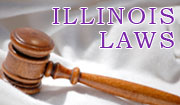
Rape
A Guide to Selected Government Information Available at WIU's Government Publications Library
Web version of this guide includes links to web resources.
Federal Government Information
Date Rape Drugs
This hearing gathers facts on the date rape drugs, GHB, Ketamine, and Flunitrazepam, and explores possible State and Federal interventions to control misuse of these substances. Witnesses include victims; law enforcement and medical personnel; and representatives from the Drug Enforcement Administration, the Food and Drug Administration, and a research company currently using GHB to combat severe narcolepsy. 1999
Y 4.C 73/8:106-7
Sex Offenses and Offenders
This Bureau of Justice Statistics summary gives statistics on rape victims, the pretrial release of offenders, and the number of convicted sex offenders in prison. 1997
J 29.2: SE 9/EXEC. SUM
New International Threat of "Date Rape Drug" Trafficking
This hearing discusses the possibility of making Rohypnol a Schedule I substance. Doctors, law officials, rape victims, and a Rohypnol representative all make statements. 1996
Y4.F 76/2: S. Hrg. 104-663
Date Rape Drugs
In this Congressional testimony the dangers of three date rape drugs, GHB, flunitrazepam (Rohypnol) and Ketamine, are discussed. The side effects and current legal status of each of these drugs are mentioned. A definition of drug schedules is also included.
Victim Empowerment: Bridging the Systems
This publication was produced to improve the treatment and support given to victims, including rape victims. It discusses aspects of victimization, such as the stages of crisis, techniques for crisis intervenors, and a definition of secondary victimization. It also tells about rape trauma syndrome. 1996
J 26.2: V 66/2
Age Patterns of Victims of Serious Violent Crimes
This Bureau of Justice Statistics Acrobat file provides graphs and statistics on victims of violent crimes broken down by age, race, and gender.
Violence-Related Injuries Treated in Hospital Emergency Departments
Violent crimes, including rape, often lead to hospitalization. This BJS Special Report examines the number of individuals treated for sexual assault by age of patient and compares that statistic to those compiled in the National Crime Victimization Survey. In an overview of violent crime, the person committing them, the drug and weapon involvement, and the breakdown by age and gender are presented. 1997
J 29.13: V 81/6
Sex Differences in Violent Victimization, 1994
This publication gives statistics for rape victims by gender and relationship to the rapist. 1997
J 29.13: SE 9
Criminal Victimization, 1973-1995
This survey shows the trends in violent crime, including rape, from 1973 to 1995. It also compares the number of actual offender arrests, the number of serious victimizations, and the number of serious violent crimes. 1997
J 29.13: V 66/2/973-95
Preventing Alcohol-Related Problems on Campus: Acquaintance Rape
This publication offers information on developing, implementing, and evaluating programs to prevent acquaintance rape on college campuses. 1995
ED 1.8:P 94/2
"Condom Trace Evidence"
The increased use of condoms by an offender during a sexual assault may lead to greater evidence against the rapist: fingerprints and evidence of penetration. This article offers advice for health care workers performing after-rape examinations.
FBI Law Enforcement Bulletin. Vol. 65, No. 5 p.12-16 May 1996
J 1.14/8: 65/5
"A Matter of Force: The Redefinition of Rape"
The definition of rape has undergone many changes over the years. This article cites cases which aided in the development of the definition of rape, including the military interpretation of rape.
The Air Force Law Review. Vol. 39, p. 19-35 1996
D 302.9: 996
Illinois Government Information
Sexual Assault Information Center
This Illinois State Police webpage dispels common myths about rape and discusses safeguards for personal security before and during a confrontation. It also lists steps a person should take after being raped.
Legal Information
"Drug-Induced Rape Prevention and Punishment Act of 1996"
This law amends Section 401 of the Controlled Substances Act by adding flunitrazepam to the list of controlled substances. It prohibits importation or exportation and the use of the drug to commit a violent crime. Finally, it decrees that flunitrazepam will be studied to see if Schedule I classification is appropriate. 1996
110 STAT 3807 P.L. 104-305
Violence Against Women
This book cites cases which dispel common myths about rape. It also discusses rapist profiles, rape trial tactics, and rape trauma syndrome. 1997
LEGL REF KF 4758.F733 1997
"Is Capital Punishment for Killers Only?"
Louisiana is seeking the death penalty for two men who raped children under the age of twelve. This article discusses both sides of this constitutional debate.
American Bar Association Journal. Vol. 83, pp. 30-31 August 1997
"Shield a Prosecutional Sword"
Rape shield laws were designed to protect victims from further victimization. However, by not allowing information about the accuser's sexual past, the law may take away the accused's Constitutional right to defend himself.
American Bar Association Journal. Vol. 83, pp. 36-37 December 1997
"Rape in the Criminal Justice System"
This article examines the process of prosecuting a rapist from report to verdict. It also looks at three issues in rape cases: the false report, the burden of proof, and the victim's past sexual behavior.1997
Journal of Criminal Law and Criminology. Vol. 87, No. 4, pp. 1194-1384
"Forensic Science: Rape Trauma Syndrome"
Rape Trauma Syndrome is a type of post-traumatic stress disorder specifically describing the symptoms of rape victims. This article examines the court admissibility of this diagnosis.
Criminal Law Bulletin. Vol. 33, No. 3 pp. 270-279 May-June 1997
"Demythologizing Spousal Rape"
Marital rape is illegal and a form of domestic violence, but it is not fully accepted as a crime in society. This article eradicates the myths surrounding marital rape.
Stanford Law Review. Vol. 48, pp. 677-709 February 1996
"Sex, Culture, and the Biology of Rape:Toward Explanation and Prevention"
By studying the underlying causes of rape, this article hopes to further its prevention. The author contends that biological theories of rape motivation offer valuable insight.
California Law Review. Vol. 87, No. 4 July 1999 pp. 827-941
http://wiu.edu/libraries/govpubs/guides/rape.php
Subject Guides
- FDLP LibGuides
- Abortion
- Adoption
- Advertising and the Law
- Affirmative Action
- Agriculture
- AIDS
- Alcohol and Related Problems on Campus
- Alternative Dispute Resolution
- Alternative Medicine
- Americans with Disabilities Act
- Animal Research and Humane Care
- Asset Forfeiture
- Aviation Safety
- Capital Punishment
- Censorship - Nonpolitical
- Censorship - Political
- Child Abuse
- Child Care
- Children and Television
- Citizenship & Immigration Services
- Cloning
- Confined Animal Feeding Operations
- Cookbooks
- Cuban Missile Crisis
- Cybercrime
- DNA
- DNA Testing of Criminals
- Domestic Violence
- Drinking and Driving
- Drone Warfare
- Drug Legalization
- Drug Testing
- Earthquakes (Illinois)
- Eating Disorders
- Elder Abuse
- Electronic Surveillance
- Endangered Species and Wildlife Conservation
- Euthanasia
- Federalism
- Financial Crisis
- Flag Desecration
- Gangs
- Global Warming
- Gulf War Illness
- Gun Control
- Hate Crimes
- Hazardous Waste Disposal
- Health Care Reform
- Homelessness
- Home schooling
- Homosexuals in the Military
- Intellectual Property
- JFK Assassination
- Juvenile Justice
- Korean War
- Learning Disabilities
- Literacy
- Methamphetamine
- Occupational Health and Safety
- Operation Desert Shield/Storm
- Police Misconduct
- Pornography
- Prison Reform
- POW and MIAs
- Problems of Adolescence
- Product Liability
- Rape
- Reproductive Technology
- Same-Sex Marriage
- School Prayer
- School Violence
- Seat Belts
- Sexual Harrassment in Education
- Sexual Harrassment in the Workplace
- Sexual Orientation Discrimination
- Small Business
- Space Exploration
- Terrorism
- Tobacco
- Unmanned Aerial Vehicles
- Vietnam War
- Violence in Mass Media
- Welfare Reform
- Women in Business
- World War I
- World War II





Connect with us: